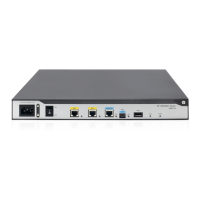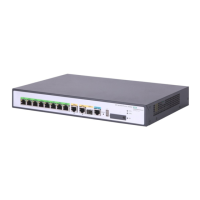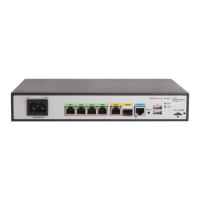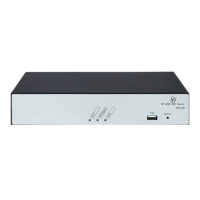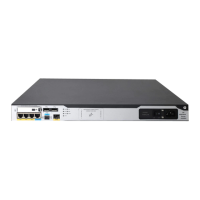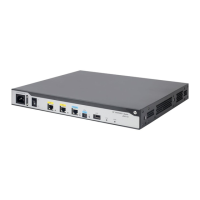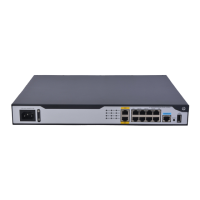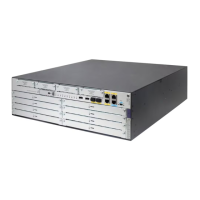Configuration procedure
To configure a T1-F interface:
Step Command Remarks
1. Enter system view.
system-view N/A
2. Enter T1-F interface view.
interface serial interface-number N/A
3. (Optional.) Configure the
interface description.
description text
By default, the description of an
interface is interface-name
Interface.
4. Bundle timeslots on the
interface into a channel set.
ft1 timeslot-list range [ speed { 56k
| 64k } ]
By default, if no timeslot range is
specified, all timeslots are bundled
into one channel set.
The default timeslot speed is 64
kbps, and the default T1-F interface
speed is 1536 kbps.
5. Set the cable length and
attenuation.
ft1 cable { long decibel | short
length }
By default, the long 0db keyword
applies.
6. Set the line code format.
ft1 code { ami | b8zs } The default is B8ZS.
7. Enable or disable user data
inversion.
ft1 data-coding { inverted |
normal }
By default, user data inversion is
disabled.
8. Set the clock mode.
ft1 clock { master | slave }
The default is slave, which is line
clock.
9. Set the framing format.
ft1 frame-format { esf | sf } The default is esf.
10. (Optional.) Enable RAI
detection on the interface.
ft1 alarm-detect rai
By default, RAI detection is
enabled on the interface.
This command is applicable when
the framing format is ESF.
11. Set the type of line idle code.
ft1 idle-code { 7e | ff } The default is 0x7E.
12. Set the type and the number
of interframe filling tags.
ft1 itf { number number | type { 7e
| ff } }
By default:
• The type of the interframe filling
tag is 0x7E.
• The number of interframe filling
tags is four.
13. Set the number of interframe
filling tags.
ft1 itf number number The default is four.
31
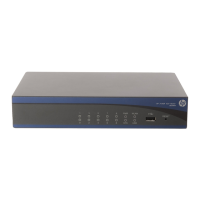
